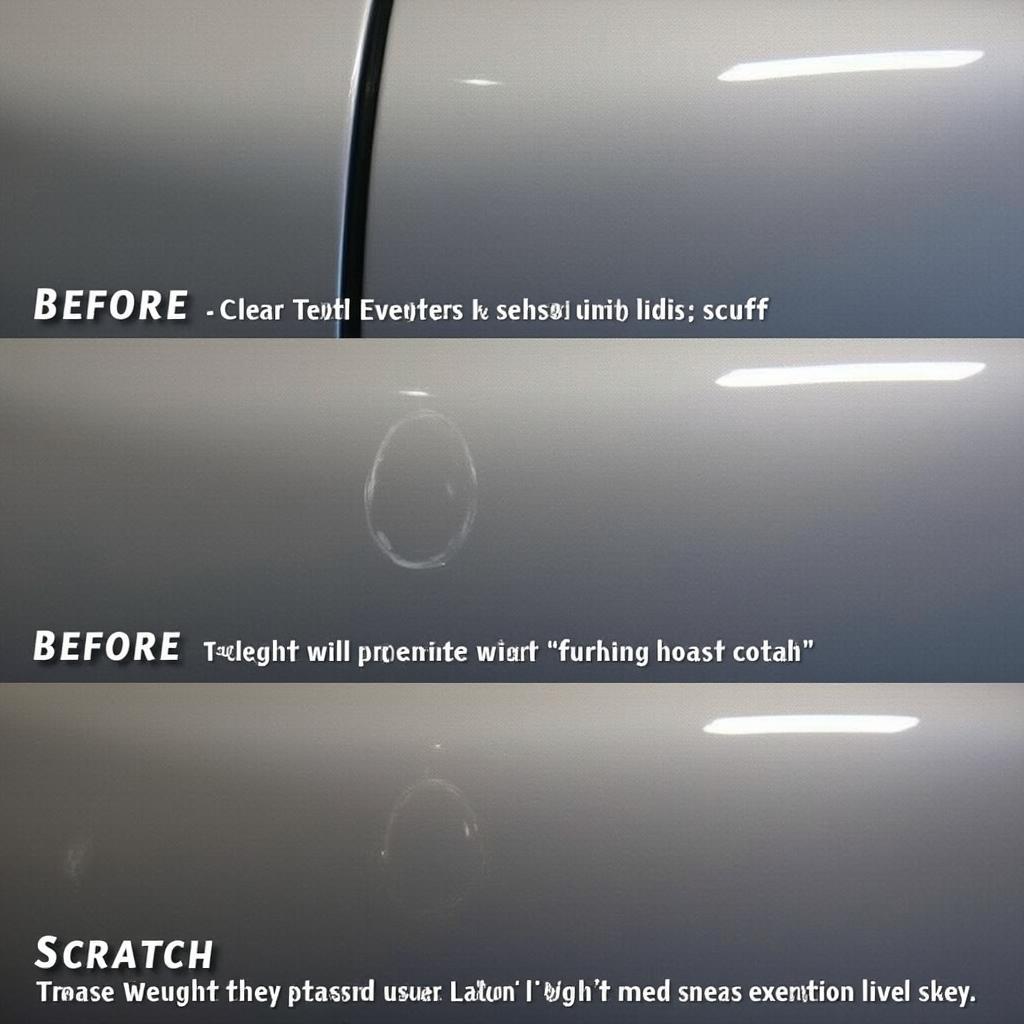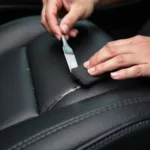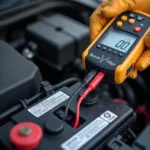Discovering a paint scratch on your car can be frustrating, but don’t panic! Minor scratches can often be addressed with simple DIY methods. This comprehensive guide will walk you through identifying the scratch type and provide step-by-step instructions on how to repair a paint scratch on a car effectively.
Assessing the Damage: What Type of Scratch Is It?
Before you begin, it’s crucial to determine the severity of the scratch. Car paint typically comprises multiple layers: the clear coat, base coat, primer, and finally, the metal body.
- Clear Coat Scratches: These are the most common and appear as light, superficial marks on the surface.
- Paint Scratches: Deeper than clear coat scratches, these penetrate the base coat, revealing the color underneath.
- Deep Scratches: These gouges reach the primer or even the metal, requiring more involved repair methods.
DIY Solutions for Minor Scratches
For clear coat and minor paint scratches, you can often achieve satisfactory results with DIY techniques:
1. Wash and Dry the Affected Area
Thoroughly clean the scratched area with car wash soap and water to remove dirt and debris. Dry the area completely with a microfiber cloth.
2. Choose the Right Scratch Remover
- Scratch Removal Products: For light, superficial scratches, consider a scratch removal product. These contain fine abrasives that gently polish away the scratch.
- Rubbing Compound: For slightly deeper scratches, a rubbing compound might be necessary. This abrasive paste requires more effort but can effectively level out the scratch.
3. Apply with Care
Apply a small amount of the chosen product to a clean microfiber cloth. Gently rub the product onto the scratch using back-and-forth motions, following the product instructions.
4. Buff to a Shine
Once the scratch is less noticeable, buff the area with a clean microfiber cloth in circular motions to restore the shine.
When to Call a Professional
For deep scratches, extensive damage, or if you’re unsure about DIY repair, it’s best to consult a professional auto body shop. They have the expertise and tools to:
- Color Matching: Professionals can precisely match your car’s paint color for seamless repairs.
- Deep Scratch Repair: Deep scratches often require sanding, filling, priming, and repainting for a flawless finish.
- Rust Prevention: Addressing deep scratches promptly prevents rust formation.
Preventing Future Scratches
Protecting your car’s paint from scratches is easier than fixing them. Here are some preventive measures:
- Regular Washing: Frequent washing removes abrasive dirt and grime.
- Waxing: Applying a protective wax layer provides a barrier against minor scratches.
- Covered Parking: Whenever possible, park in a garage or under a carport.
Conclusion
Knowing how to repair a paint scratch on a car can save you money and maintain your vehicle’s appearance. While DIY methods work well for minor scratches, seeking professional help is crucial for more severe damage. Remember, timely action is key to preventing further damage and maintaining your car’s value.
For more in-depth information on car paint repair, you can explore related articles:
By following these tips and understanding the repair process, you can keep your car looking its best for years to come.



